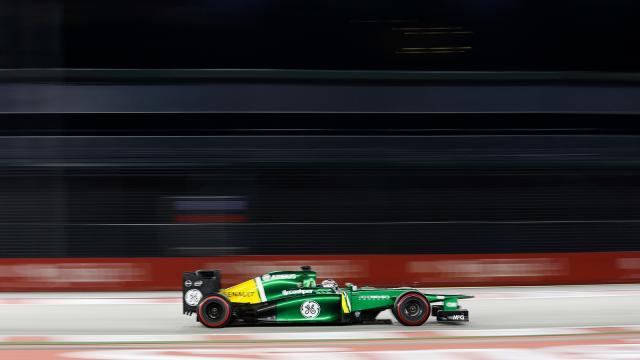In a sport where the difference between winning and losing is measured in thousandths of a second, squeezing every last ounce of speed out of your F1 racecar is absolutely imperative. A new collaboration between GE and Caterham aims to do just that — by leveraging the power of big data and materials science.
First of all, it’s worth mentioning how vehicles used in F1 races differ from NASCAR. Unlike the high-speed ovals that American NASCAR fans are generally used to, where a high top speed and steady handling are vital, F1 cars are designed for quick accelerations, tight turns, and vehicular agility. What’s more, they are notoriously challenging to operate. As such, Caterham is focusing on four areas with which to improve it’s racing fleet: data analytics, fibre-optics, composites and heat management.
Each vehicle, officially known as the Caterham CT03, is impregnated with more than 500 sensors throughout the power plant, drive train, and suspension — including cutting-edge fibre optic sensors that measure the amount of downforce imparted on the car’s front wing. This array of sensors generates nearly 1000 data points of data per second, which amounts to whole gigabytes of data every lap. This data is sent to Caterham HQ, where it is analysed and used to improve forthcoming body and chassis designs.
Besides making them smarter, GE is making the car bodies both lighter and more efficient. While Caterham’s cars are already made almost exclusively of lightweight composite materials, a few engine, exhaust and drivetrain components are still fabricated from aluminium. GE is currently working to produce composite versions of the vehicle’s aluminium cooling tubes for the upcoming 2014 season.
Also new for the 2014 season? A smaller engine displacement limit of just 1.6 litres. The current season’s Renault RS27-2013 is nearly 50 per cent larger, a 32-valve 2.4-litre V8.
Incredibly, Caterham’s new engines will still produce the same 700 hp output despite the shrinking engine, and will do so while consuming a third less fuel. The engine will be outfitted with a set of powerful turbochargers working in tandem with an intercooler system to compress incoming air before it hits the fans. What’s more, the car will also incorporate an active energy recovery system to further reduce its fuel consumption.
With these improvements in place, Caterham could lead the pack in the 2014 season — and using the data they cull from each race, these cars will only get smarter. [Caterham via GE Reports – Image: Caterham]
